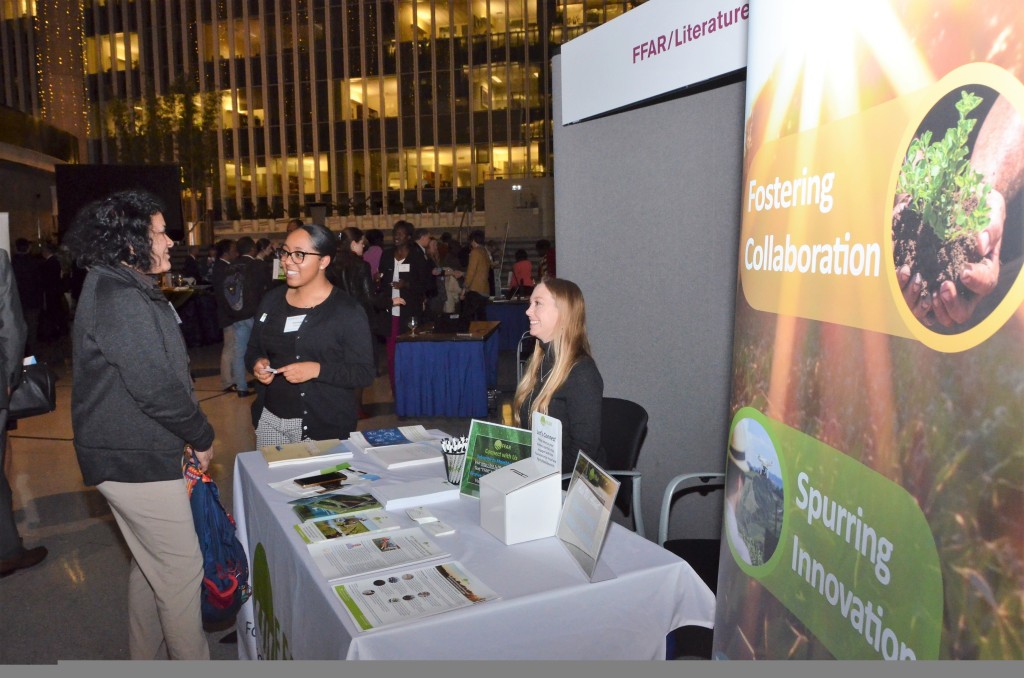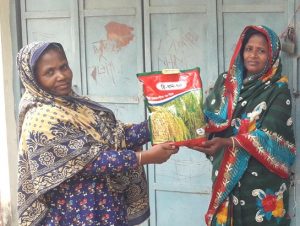Brittany Scalise
Whenever you bite into a piece of food, do you think about where it comes from? How did it get from the ground to your table? Who are the farmers and entrepreneurs who cultivated and sourced it? It’s strange to think that this doesn’t cross our minds more often.
This issue is one we should be thinking about more and more often. As populations continue to grow, there needs to be new innovations to increase sustainable food production, without draining the earth. With factors such as climate change impacting water supplies and security, business-as-usual just won’t cut it.

For this reason, on January 29th, 2018, the Water for Food International Forum Innovation Fair: Innovate to Irrigate, gathered together 19 organizations who are leading the way in this challenge, through creative technologies that support farmer-led irrigation practices.
In her opening remarks, Laura Tuck, Vice President for Sustainable Development at the World Bank, applauded the focus of “highlight[ing] technologies that both improve the expansion and intensification of farmer-led irrigation, but also really help us address the risk they raise for the sustainability of resources.”
Below are just a few of the innovations from some of the most creative organizations in the irrigation field:
1. KickStart International
KickStart International aims to meet the needs of small-scale farmers in Africa by selling its products through the local private sector supply chain.
“We design, market, and promote small-scale irrigation technologies that are efficient, sustainable, very low-cost, and high-quality,” explained Jenna Rogers-Rafferty, Director of Development & Strategic Alliances.
Incorporating feedback from farmers, the organization is currently working to develop and improve a solar-pump technology by increasing its durability, while decreasing its size.
KickStart has also produced a short documentary, A Seed of Maize, which “depicts how difficult the decision process is for farmers when they’re thinking about investing in something like irrigation,” according to Rogers-Rafferty. This film has been used to show both farming communities and partners all the considerations that go into adopting new irrigation practices.
2. Upstream
Upstream uses satellite imagery with machine learning to monitor and measure from space. What does this mean for irrigation and agriculture? By taking data from a variety of sources, the platform essentially provides a one-stop-shop to search for insights on specific regions of land. For example, is the land irrigated? And using what technology?
Upstream hopes that presenting the information in this way will aid decision-making: “We’re trying to make it as easy to use as possible, by taking traditionally very difficult GIS processes that require degree, and making them so that any practitioner or developer could go learn,” said Marshall Moutenot, Co-Founder.
In addition to monitoring, the program allows users to search for and pinpoint things such as rice fields in California, or where in an irrigation system there might be room for hydro-power.
“The sky is the limit,” Moutenot added. “If the satellites exist, we can get as detailed as those allow us.”
3. Acclima
With a mission to increase productivity and efficiency in agriculture, Acclima is focused on the precise application of irrigation water. At the Innovation Fair, they were showcasing two Time Domain Reflectometers, which do just that.
“It’s the only sensor on the market that is able to cleanly reach the moisture, and disregard the salinity of the soil,” Kingsley Horton, Sales and Marketing with Acclima, explained as a buzz of conference participants gathered around to examine the reflectometers.
Because salinity can interfere with measurements, this sensor allows farmers to get an accurate reading to reduce water waste, pumping costs, and erosion, while increasing crop yields and nutrient uptake into the plants.
So what’s on the agenda? In order to continue to bring prices down and make these products available to small-scale farmers, Acclima is seeking collaboration with major partners in the field.
4. Dynamax
Dynamax is also measuring moisture levels, but this time in plants. From small flowers to large trees, “we can put sensors on a plant that tell us exactly how much the [water] flow is for one day. So we can tell exactly what that plant needs in water,” offers Eric Pena, Business Development for Dyanamax.
This data is then uploaded to a cloud based system, so the data can be read and compared across all plants surveyed. Pena added: “It’s the whole next level. If you give a plant exactly the right amount of water for the efficiency, then it actually raises the yield.”
In his remarks at the Innovation Fair, U.S Congressman Jeff Fortenberry (R-NE) spoke compellingly about “this idea of economic regeneration, particularly the use of our land – so we are helpfully harvesting it, and leaving it in a sustainable manner for those who come after us.”
By bringing together some of the most creative minds working on this challenge, the Innovation Fair hopes to have made a contribution towards this vision. – World Bank Water Blog




